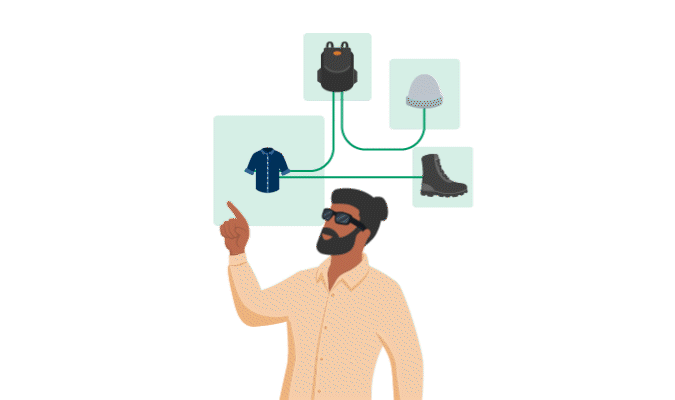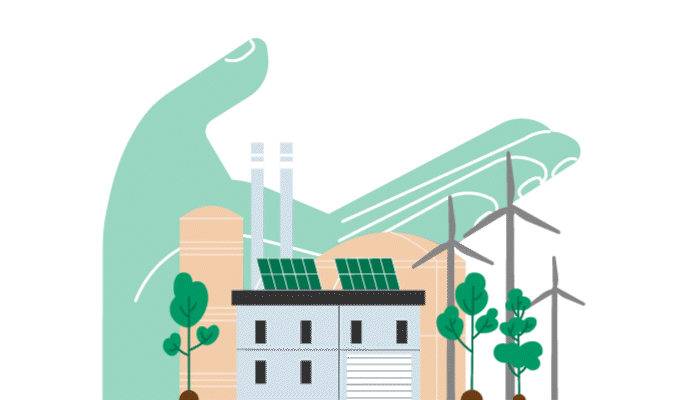Carbon Capture Apparel

Weaving Carbon Capture into the Fabric of Retail Sustainability
Picture this: You’re in need of a few new shirts to wear on an upcoming vacation, so you pop on your smart glasses and start scrolling. There are plenty of options but, as an environmentally conscious shopper, you aren’t just going to jump on the first item you see. You’ve sworn off certain fast fashion brands, and you make a point of upcycling all your old clothes, gadgets, and more. Sometimes this means it takes you a while to find a product that meets your criteria — but not today. You pause mid-scroll as the phrase “space threads” glimmers across your screen. It looks like your favorite name-brand retailer just launched an entire line of eco-friendly clothing. But what makes it so stellar?
You read on, finding this new space threads clothing line is unlike anything you’ve ever seen before. Made from carbon-negative textiles, this clothing not only minimizes carbon emissions but repurposes those emissions into apparel.

While it sounds farfetched, this future is already becoming a reality. Today, innovative companies and the scientists behind them have devised a process to capture carbon emissions from the air and convert them into cellulose. That cellulose can be used to make fabric. The result? Eco-friendly clothes made from the captured carbon emissions of manufacturers and suppliers all around the world.
One major retailer has partnered with a biomanufacturing lab to do just this, bringing consumers resource-neutral clothing options so that shoppers — as well as suppliers and retailers — can all contribute to a more symbiotic and green future.
In the years to come, the retail industry may see this type of innovation at scale as more companies move to reduce their Scope 3 emissions.
Unsure how to plant the first seeds of an environmental, social, and governance (ESG) Strategy? Find out how you can embed sustainable practices into your business model in our insight, Starting Your ESG Journey.
Stellar Sustainability Means Decarbonizing the Value Chain
Retailers play a major role within the global environmental ecosystem and have an important responsibility to help move the economy toward a more sustainable future. The retail industry is responsible for about 25% of global greenhouse gases, according to research by SaaS platform provider Plan A. Of those emissions, the vast majority — up to 98% — come from retailers’ global value chains. These emissions are known as Scope 3 and include indirect emissions from procurement, transportation, manufacturing plants, and suppliers.
Even though retailers are not yet broadly required to address Scope 3 emissions, those with an eye toward the future should take a strategic position now to quantify their emissions, prepare their operational infrastructure, and consider deploying new sustainability practices. The market has already seen new rules, such as California’s Climate Corporate Data Accountability Act (SB 253) and Climate-Related Financial Risk Act (SB 261), which outline requirements to collect and report on Scope 3 emissions. These bills, approved in October 2023, apply to virtually every large company operating in California, including retailers. Meanwhile, in the EU, the Corporate Sustainability Reporting Directive also requires large companies to report on both indirect and direct emissions. For U.S. retailers with a presence in either California or the EU, these new regulations are already driving climate reporting compliance.
Finding ways to address and reduce emissions, inclusive of Scope 1, 2, and 3 types, will be a key competitive differentiator in the years ahead as more and more consumers demand sustainable products, regulators focus on ESG compliance, and brands seek ways to maintain their edge.
Customers and stakeholders desire increased transparency around emissions reporting, leading many brands to establish greener practices and launch decarbonization efforts.
These sentiments and market forces could make carbon capture apparel an attractive play in the years to come. Though the manufacturing processes using this type of technology are still nascent, there is significant progress occurring now, which is driving the industry towards a futuristic state.
Biomanufacturing companies have developed proprietary technology “powered by enzymes that ‘eat’ CO2 and produce lyocell yarn,” according to CarbonCredits.com. This yarn is a core component in textile generation. By capturing greenhouse gas emissions produced by manufacturers and converting them into a resource for textiles, retailers can decarbonize their supply chain and improve their sustainability posture.
However, supply chain decarbonization won’t happen overnight. There are many ways that retailers can get started on this journey, such as identifying tactics to hold suppliers more accountable or working with partners on innovative, green-tech solutions.
Consumers are backing up their sustainable commitments with their wallets — and retailers must take note. Check out our 60-second Retail Podcast episode Critical Components to a Retailer’s ESG Strategy to hear how ESG legislation is impacting the ability of retailers to attract shoppers.
Scope 3 Emissions — Charting the Stars for Future Success
To build resilient business models and appeal to the next generation of decision-makers, retailers must prioritize emissions reporting and be able to quantify their carbon footprint — especially their Scope 3 emissions. While the industry may slowly see more partnerships between retailers and carbon capture technology companies in the future, retailers are not likely to start their decarbonization journeys there.
The road to a more sustainable supply chain is long and will require investment and overarching operational changes. But the good news is that sustainable practices often yield healthy returns on investment: Research shows a 60% improvement in operating profits through resource cost reductions, according to Plan A.

Retail executives could also consider other, more straightforward ways they can decarbonize today. For example, conducting Category Spend Insight Discovery (CSID) processes to evaluate and understand emissions can help companies assess procurement and spend information to find out where their spend is most closely associated with heightened emissions (i.e., logistics, material sourcing, etc.). Retailers can use this information as a jumping off point to strategically address high emission areas with supply chain partners.
Additional tactics that retailers could explore include:
- Leverage spending power with supply chain partners to push them to engage in decarbonization efforts. For retailers with significant purchase power, this method is likely to incentivize suppliers to act.
- Put procurement requirements within Request for Proposals for certain types of traits, behaviors, and environmental commitments from suppliers. Retailers can enforce stricter terms in order to uphold sustainability commitments.
- Hold suppliers accountable for their own carbon goals and regular reporting. While this may seem intuitive, accountability is a key component of any workable sustainability program — if retailers don’t address issues across their supply chains when they see them, decarbonization efforts could be deprioritized.
- Embed renewable energy projects into operations where feasible. Not all retailers will have the financial or operational means to collaborate on renewable energy projects within their network, but for those that do, pursuing solar, wind, or green energy initiatives can help reduce greenhouse gases and win over stakeholders.
The future looks bright, but navigating a rapidly evolving compliance and ESG risk landscape can be complex. Working with a third-party advisor who understands the nuances can help.
Understanding new compliance requirements for carbon reporting is critical. Help your business succeed by getting up to speed on current climate reporting laws in our insight, Prepare Now: California Climate Laws Impact Thousands of Businesses.
BDO’s Roadmap to Resilience: Helping You Navigate the Unknown
BDO knows that reducing carbon emissions and creating ethical supply chains is a core element of future proofing the retail industry. Yet, even outside of addressing carbon emissions, there are several ways to develop a sustainable supply chain.
A sustainable supply chain means behaving ethically. Retailers must consider the labor practices that are being employed across the value chain, as it’s not just about environmental impact, but social impact, too. Increasingly, stakeholders and customers will want to see efforts to improve in social domains, such as ensuring suppliers pay a fair wage to their employees and do not make use of forced labor.
BDO’s sustainability professionals can help you embed resilience throughout your energy practices, value chain operations, and social presence. Our teams can assist your company with sustainability self-assessments, ESG reporting, or designing a long-range strategy for network and manufacturing improvements.
Additionally, BDO’s Risk Advisory professionals can develop ESG programs to evaluate the risk landscape and help you prepare to adapt to stakeholder demands while future proofing the business.
Repurposed Carbon Today Means Retail Success Tomorrow – Are You Ready?
BDO’s Retail and Consumer Products professionals understand the unique sustainability issues facing the industry and how to tackle them for future success.